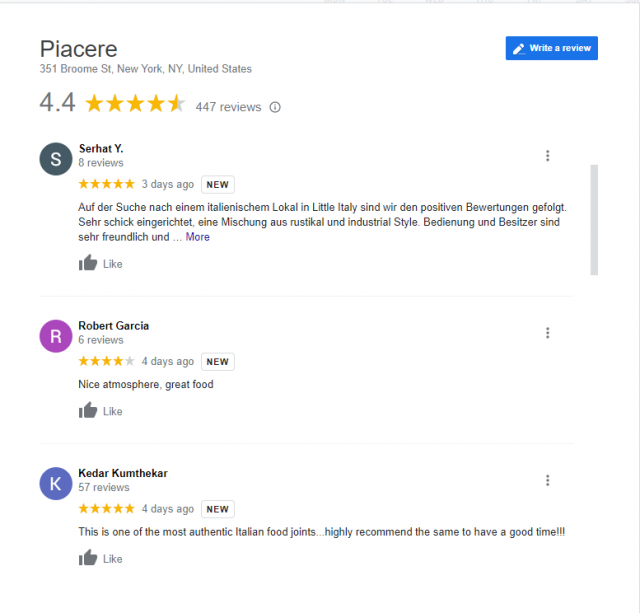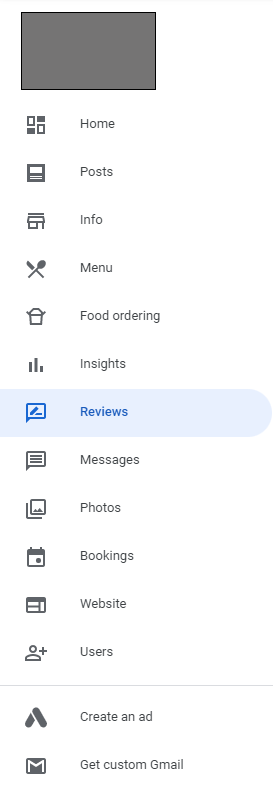
Monitoring Online Reviews
If you’re being proactive about building your review profile, review monitoring is an essential activity because it helps you to keep track of what’s being said about you online.
Not only does this mean you can identify any potential issues and respond to them quickly to limit their impact, but it also means you’ll be able to respond quickly to all reviews left for your local business.
This is important for two reasons. First of all, businesses that respond to reviews perform better in local search. And secondly, because today’s consumers actively check for review responses from business owners.
How do you monitor reviews?
Monitoring your online reviews simply means you’re going to keep tabs on customer feedback left for you on relevant platforms. You can do this manually by checking each review platform individually or by using a review monitoring tool.

How can I monitor online reviews?
The first step to monitoring online reviews for your business is to make a list of review sites. This should consist of both general review sites, such as Google, Yelp, and Facebook, along with industry-specific sites appropriate to your business. If you’re in the hotel or restaurant business, that could mean Tripadvisor. If you’re a tradesperson, that could be Angi. If you’re a contractor, Houzz.
It could be that you aren’t sure which sites are most relevant to you. An easy way to overcome this hurdle is to ask your customers which review platforms they use.
You can also add competitors into the mix here and piggyback off their activities. Find out which review platforms they’re most active on — do they have certain badges on their sites, such as a badge from Tripadvisor or Trustpilot? When you search for the company name, which review sites appear at the top of the results page?
As you build your list of sites to monitor, keep a record of any important sites that you don’t already appear on. You’ll need to start the process of review generation on these platforms.
Manual Review Monitoring
When it comes to online review monitoring, you have two options — use a review monitoring tool or do it manually.
Manual review monitoring is more time-consuming and runs the risk of reviews being missed. To reduce that possibility, ensure that your email address is registered with the review platform. Also, make sure you’ve opted in to receive an alert each time a new review is published.
A monitoring tool is a more efficient and effective way to keep track of your online reviews. This is because it’ll do the time-consuming task of checking for new reviews for you. This removes the risk of reviews being missed and enables you to respond promptly. This means you’ll be able to take action quickly in the event of a negative review appearing.
Related: Free Online Video Course – ‘A Beginner’s Guide to Generating and Managing Reviews‘
Whichever route you choose, be sure to keep a log of the frequency of reviews, the volume of negative versus positive reviews, and any action taken as a result of each review. If the rate at which you’re earning new reviews slows down, then further action will be needed to understand why that’s the case.
What should you do with the reviews you’re manually monitoring to understand trends?
If you’re manually undertaking review monitoring, you’ll need to carry out an additional task to then make sense of your data. To understand the sentiment and identify common themes, you’ll first need to consolidate the text of the reviews together in one central location, such as a shared Google doc.
Once you’ve done this, you can use a word cloud generator (Google has a free app here) to help you make sense of the data. The word cloud will show you common words and phrases that have been used. This will give you insight as to which products, services, and themes are being talked about most often.
Look out for phrases such as ‘fast delivery’, ‘helpful’, ‘good customer service’, and individual product names. This will clue you in as to what people are liking, buying, and wanting more of.
You may also notice that there’s a correlation between these attributes and the reviews in a prominent position on your Google Business Profile (formerly known as Google My Business). Google takes note when people regularly mention a particular element of service, such as ‘fast delivery’, or ‘outdoor dining’, and will add this as a highlight to your GBP on mobile devices.

How do I track negative reviews?
You can perform online business review monitoring to identify negative reviews as they appear. This can be achieved by using a review monitoring tool or by manually checking the review platforms associated with your business. It’s important that negative reviews are quickly addressed to prevent damage to your reputation, so an automated tool is often the best bet.
You can find our tips for how to handle negative reviews here.
How do I monitor Google reviews?
Review monitoring of Google reviews can be done either manually or by using a monitoring tool. Manually monitoring involves checking GBP for new review alerts. You’ll also be notified via email when a new review is shared, with this notification going to the email address used to manage the GBP account.
To access reviews, log into GBP and select ‘Reviews’ from the left-hand navigation.
